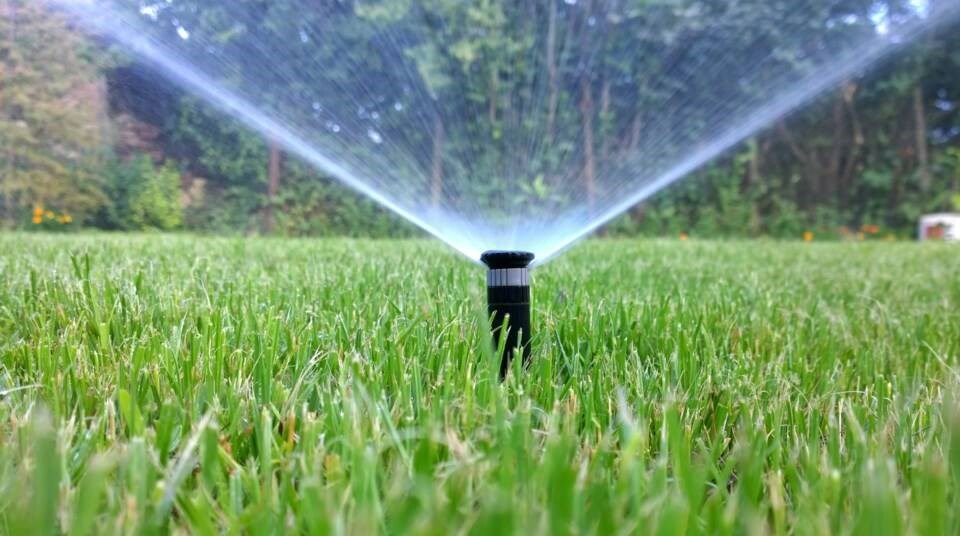Despite the evidence given by water meters, and visibly lush landscapes, the District of West Vancouver has issued $0 in fines this dry season for flouting watering restrictions.
In contrast, neighbouring municipalities have been giving teeth to Metro Vancouver’s Phase 2 watering restrictions – which ban lawn watering of any kind – since they rolled out Aug. 4. According to staff, North Vancouver District has issued 45 tickets this year, amounting to $10,650, while North Vancouver City has issued 63 tickets and warnings, for a total of $2,800. Across Burrard Inlet, the City of Vancouver has issued more than $160,000 in fines.
Meanwhile, West Vancouver has been aware that some of its residents were violating restrictions in Phase 1, which rolled out in May. The district’s metering system showed that eight per cent of residents were using four times the typical household supply in June. Warning letters were sent out to those households.
District staff said at the time that it preferred taking an education-first approach, but with Stage 2 restrictions rolling out, “the bylaw enforcement team will be responsive to any complaints and reports, and will be moving forward with a targeted enforcement approach.”
Weeks later, staff reported that the warning letters had precipitated a drop in usage at 80 per cent of the problem households, but not all. Still no tickets issued.
One week into September and enforcement has been carried out across much of Metro Vancouver. So, why has no one in the region’s wealthiest municipality received a fine?
Similar to the response given at the beginning of August, West Vancouver staff say they’re moving to an enforcement approach.
“There was a region-wide meeting at the end of August to discuss the Stage 2 transition,” said spokesperson Carrie Gadsby. “A key takeaway from this meeting was it is time to move from education to enforcement.
“Following this meeting, it was decided that bylaw officers will stop issuing warnings and start issuing tickets for all lawn watering violations where there’s enough evidence to support a ticket.”
Privacy hedges and automatic irrigation systems make it difficult to get evidence to support tickets, Gadsby said, adding that staff encourage residents to report any lawn watering violations they see in the community.
The district also says it’s participating in the summer support program of Metro Vancouver’s Drinking Water Conversation Plan, which includes morning and evening neighbourhood patrols.
With its fully metered system, West Vancouver said it tracks potential violations differently than other municipalities.
“In West Vancouver, we opted to invest in water meters instead of outreach staff,” Gadsby said. “Having a fully metered water utility allow us to target our outreach to high water users and addresses where leaks might be an issue.”
Average streamflow into Capilano reservoir hits record low
The education and the carrots only go so far, said Linda Parkinson, director of policy, planning and analysis for Metro’s Water Services Department. “You also need the enforcement.”
“[There’s been] a lot of a lot of media coverage to get the word out too, so I think it’s fair to say that most people should know about the ban by now,” she said.
For context, our province is experiencing some of the direst drought conditions ever. Many regions in B.C., including the Lower Mainland Basin, are at the highest drought rating, Level 5, which means “adverse impacts on both communities and ecosystems are almost certain.”
Locally, seven-day average streamflow at the mouth of the Capilano Lake reservoir has hit around 0.85 cubic metres per second, the lowest on record since data started being collected at the site in 1914. Previously, the lowest average flow into the reservoir was 1.1 m3/s last September.
Metro Vancouver’s climate outlook for this year shows that the region’s watersheds have received just 38 per cent of normal precipitation levels for June, July and August, while temperatures have been 1.6 degrees warmer. Looking ahead, the drought is expected to continue with warm, dry weather persisting into the fall.
“We’re not expecting significant input to the reservoirs,” Parkinson said. “What we can control now is the demand, and we need to keep the demand low.”
Partially due to the strong snowpack last winter, reservoir levels are currently within the normal range, at around 56 per cent of maximum, or 163.8 billion litres as of Sept. 3. That’s the combined volume of the Capilano, Seymour and Coquitlam reservoirs, which supply the entire regional district with drinkable water.
While still within the normal range, water has been coming out of the reservoirs without anything new coming in since the spring.
“The small volumes of rain that did fall in early August and early September, were not enough to make any impact to the reservoir levels – the soil is so dry that the water’s just absorbed,” Parkinson said.
Overall, Phase 2 restrictions have tempered demand. For the first half of July, Metro residents were using 1.5 billion litres on average per day, which fell to around 1.3 billion litres in August and 1.2 billion litres daily in September.
Keeping demand low is key to avoiding Stage 3 restrictions, which can hurt businesses.
“That’s where you start getting into curbing uses from businesses, like car washes, window washers – it gets a lot more impactful on local businesses. So we’re very mindful of our decision to move to Stage 3,” Parkinson said.




